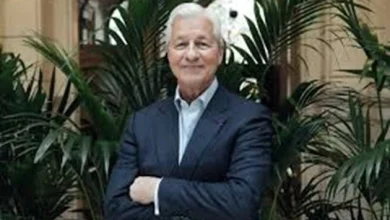Human evolution: 7 interesting theories about why our ancestors evolved into modern humans

The theory of evolution is something that has divided people into supporters and opponents for almost 150 years. We will not describe the arguments of both sides; that is not what we are talking about today. According to the theory of human evolution, humans did not evolve on their own as a single species. At least 15 different types of early humans evolved separately and had different traits, including different brain volumes.
However, except ours, all of these species have remained in history, giving way to homo sapiens. But why so? What made our ancestors evolve into modern humans? There are several interesting theories on this subject.
1. Mitochondrial Eve theory
Eve is Adam’s consort, and they are both, in terms of the Bible, the first human beings on Earth, from whom all others descended. That is why our common female ancestor was given this name. The essence of the theory of mitochondrial Eve is that we all come from one ancestor who lived about 200,000 years ago. And there is an interesting feature.
Before its occurrence, the mitochondrion in Eve’s brains of our ancestors increased gradually for approximately 3 million years. But with her emergence, there was a sharp jump of as much as 30% in brain volume. It is not fully known why this happened, and scientists believe it was due to a genetic mutation that occurred in the brain of mitochondrial Eve or her close ancestors. Scientists believe that even a small change in one gene would have been enough to cause such a significant increase in brain size.
This genetic mutation has become so dominant that it has displaced all other species of distant ancestors of modern humans, passing from generation to generation. So we can say that all of humanity came from one common ancestor who lived 200,000 years ago.
2. Theory of bipedalism
If the mitochondrial Eve speaks of a mutation resulting in an explosive growth of brain volume, then the bipedalism theory speaks of less rapid development. The gist of this theory is that the steady increase in intelligence of human ancestors is related to the transition to walking on two legs. This happened about 4 million years ago, resulting in a gradual shrinking of the pelvis and birth canal. Because of this, the skulls of born babies became more elastic so that they would not injure both mother and baby when they came out through the narrow birth canal.
In turn, the soft bones of the skull in infancy allowed the brain to expand unhindered, resulting in a gradual increase in brain volume and intellectual capacity.
3. The aquatic ape theory
Looking at the closest creature to man in terms of kinship, the apes, we notice that we are practically devoid of hair, unlike them. Moreover, we have substantially less hair than even our fairly close ancestors, who lived a couple of million years ago. Why is this so?
In the 1940s, the aquatic ape theory was put forward. Its essence is that between 6 and 8 million years ago, our ape-like ancestors sought food by swimming. And because the hair, at least that possessed by our ancestors, was not adapted to water, there was less of it with each generation. In addition, our ancestors developed a more distinct fat layer.
Although the aquatic ape theory is criticized and controversial, it has many supporters with clear arguments.
To get the latest stories, install our app here
4. The germ theory of disease
While the aquatic ape theory speaks of the loss of hair due to the aquatic environment, the disease theory speaks of the loss of thick body hair due to attempts to avoid parasites. The fact is that parasites living in hair can carry with them malaria, West Nile fever, Lyme disease, and other diseases, which even today remain extremely dangerous, especially in Africa. And since our ancestors lived on this very continent, the issue of hair reduction was one of the main issues in the evolutionary process.
Parallel to how our ancestors were losing their hair cover, they were developing their brains. Hair is essential for regulating body temperature, and if it becomes less, then we have to improvise to avoid overheating or freezing by inventing fire, clothing, construction, and so on.
5. The killer ape theory
Another controversial theory, which does not make it any less interesting. This theory was put forward in the 1960s. It says what we have long known: humans are violent and even enjoy violence to some extent—proponents of this theory claim that our ancestors evolved into the modern man partly because of this trait.
The theory’s essence is that early humans, migrating to new areas, even those that they did not consider important, destroyed everyone in their path, sometimes doing very gruesome things to intimidate or perform rituals, namely practicing cannibalism, torture, and the like.
This practice had several consequences. First of all, it reduced the population of other branches of people, and here our ancestors acted as peculiar forest sanitarians, exterminating the less fit. It also allowed access to better resources and more efficient development. Besides, the destruction of males in captured territories and mating with their females led to new mutations and the appearance of more adapted descendants.
6. Diet theory
The main difference between homo sapiens and other human species was that they learned how to make fire and cook food on it. This resulted in a major change in diet, for although other human species also ate meat, they could not eat much of it because of its poor digestibility in its raw form. Heat-treated food is another matter, as it is better digested and carries less risk of parasite infestation.
Eating a lot of meat changed people. It provides a lot of energy, and a lot of it is required for mental activity. When the body is hungry, it has no time for developmental capacity, and when it is full, you can already think about the world around you. Secondly, hunting was a group activity that allowed our ancestors to develop communication skills, planning, and so on. All of this contributed to the growth of neurons.
Carbohydrates also played a role, as they too provide a lot of energy. The brain uses about 60% of the glucose in the body, so a constant supply of carbohydrates is essential for intellectual growth. Our ancestors obtained this element from fruits, vegetables, and nuts, and gradually they realized that it was easier to grow locally without the risk of encountering predators or getting lost.
7. The theory of climate change
The way the climate is changing these days, human activities are to some extent to blame, but only a fraction. The climate is changing all the time, and today, for example, the Earth is still emerging from the last ice age, as evidenced by vast permafrost areas.
The climate has changed dramatically over the course of human history. Our ancestors survived a severe ice age and a relatively hot and arid era. And each time, as scientists believe, climate change led to a sharp evolutionary leap because our ancestors had a short time adapting to the new conditions to survive. They did this by inventing new tools and using them to do the things they needed to adapt to their environment.
And each climate change affected different traits. For example, when the climate was hot and dry, the ability to analyze and plan for food and water improved the most. During relatively humid periods, the emphasis was on s3xual selection. Each period brought its own improvements and made humanity as we know it today.




